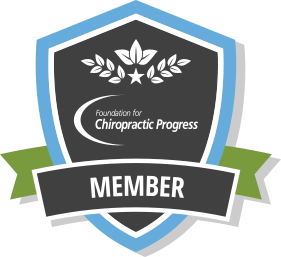|
|
Neutral posture is observed when a plumb line passes
through the center of the ear, shoulder, hip, knee and just in front of the
ankle (Illustration - LEFT). Forward Head Posture [FHP] is present when the
head at rest is positioned in front of the center of the shoulder. The movement
of this much weight (About ten pounds) in front of the plumb line causes a
shift in the body's Center of Mass, or balance point.
|
|
The good news is that the
human body has an exquisite self-balancing system to compensate for shifts of
the Center of Mass. The bad news is that these compensatory changes can be
quite extreme (Illustration - RIGHT ) and cause severe structural stresses and
even changes in organ systems.
There is a predictable pattern
of compensation as the body realigns the Center of Mass. This is called the Trinity of Forward Head Posture [FHP].
- Head
moves forward of the shoulders. This changes the body's center of mass and
center of gravity, triggering a response in the body's balance system.
- To
counter-balance the mid and upper back drifts backward, the shoulders rotate
inward.
- In
response to that movement, the pelvis tilts forward
Several major studies have
concluded that FHP is a direct indicator of a person's overall health:
- Spinal pain, headache, mood,
blood pressure, pulse, and lung capacity are among the functions most easily
influenced by posture; however, many symptoms, including pain, may be moderated
or eliminated by improved posture.1
- Hyperkyphotic (hi-per-kie-fah-tick)
posture [excessive curvature of the thoracic spine, commonly referred to as hunchback] predicts increased mortality. Interventions specifically targeted at
improving hyperkyphotic posture could result in reduced mortality rates.2
Researchers
found that even mild forward head carriage is “detrimental” to a person’s “overall
health”. They concluded that the farther the head/neck moved in front of the
seventh (7th) cervical vertebrae “all measures of health status
showed significantly poorer scores” and that this forward translation increased
a person’s pain and decreased their ability to function!3
Researchers at the University
of Leeds in the UK found a direct cellular connection between muscles in the
neck and a part of the brainstem - called the nucleus tractus solitarius (NTS)
- which plays a essential role in regulating heart rate and blood pressure. This
finding quite possibly explains why an injury to the muscles of the neck (i.e.
whiplash) can at times change a person’s blood pressure and heart rate. It
stands to reason that repetitive use injury to these same muscles (i.e.
slouched posture at your desk and/or computer, cell phone, tablet use) may very
well adversely alter these vital signs too!
 |
| Poor Posture Alters Your Vital Signs |
Major Effects of
Forward Head Posture
- For every one inch the head
sits forward of the shoulders, an additional 15-30 pounds of tension is placed
on the muscles in the back of the neck.
 |
| The Physics of Forward Head Posture |
- It has been estimated that a
person with Forward Head Posture uses 30% more body energy to keep the body
erect.
- As the body shifts, certain
muscle groups get stretched and become weak, and other groups shorten, and
become weak. This results in degenerative changes that twist and distort the spine
and subsequently shorter stature.


There is nothing good about poor posture and regardless of the activity (work or play) posture affects your overall performance. At least 85% of the back/neck pain related issues that enter my office derive from improper posture. Poor bodily usage directly impacts the biological, psychological, and social aspects of our daily lives leaving us dysfunctional, exhausted, and in pain. Implementing proper body mechanics is simply a mindful adherence to good habits that must be practiced with moment to moment awareness.
Even though poor posture is not self-correcting it can be reversed. A chiropractor near you utilizing manual therapy, therapeutic exercise, and lifestyle advice can help you overcome upper crossed syndrome [see image above] and return you to a neutral posture in no time









